Thinking About Dark Strawberry Blonde? A Colorist’s Honest Guide
You know, after more than two decades behind the salon chair, I’ve seen it all. I’ve mixed every color of the rainbow, from soft pastels to electric neons. Trends come and go, but there’s one request that has never, ever gone out of style: a true, rich dark strawberry blonde.
In this article
And honestly, it’s one of my favorite colors to create. It’s not just a simple, one-note shade you can slap on. Oh no. It’s a delicate dance of copper, gold, and a whisper of soft brown. It’s a harmony of tones, and getting that harmony just right is a real craft. It’s the kind of color that looks effortless but requires a ton of skill behind the scenes. This guide is basically everything I’ve learned from thousands of hours of mixing, painting, and perfecting this gorgeous shade.
So, What’s the Secret Sauce? Understanding the ‘Why’
To get why this color is so tricky, you have to understand a little bit about your hair. In the salon world, we use a level system from 1 (jet black) to 10 (lightest blonde). Dark strawberry blonde usually lives around a level 6 or 7. But the real magic isn’t just the level; it’s about the undertones we expose along the way.
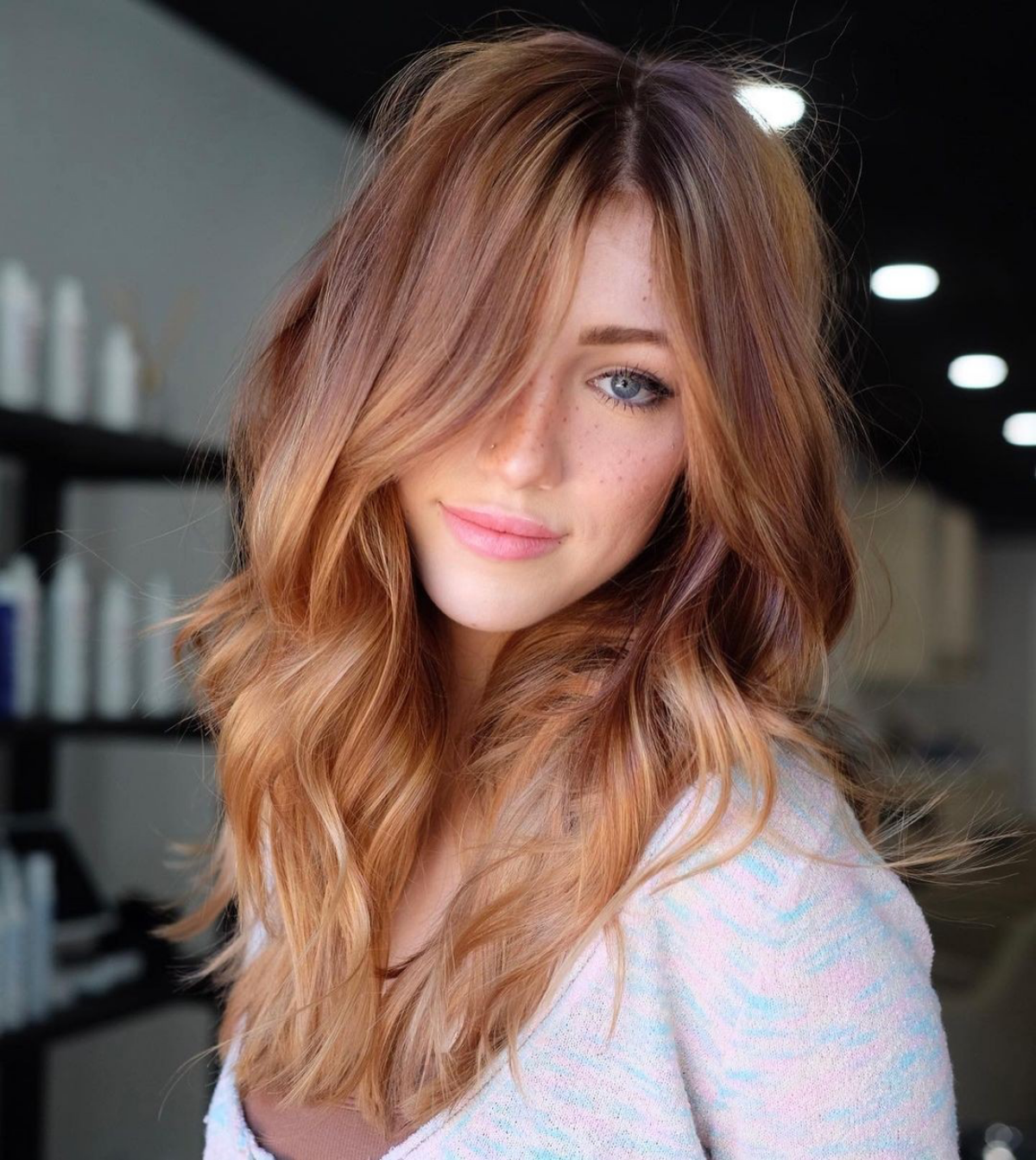
Your hair has two kinds of natural pigment: one that gives it brown/black tones and another that gives it red/yellow tones. When we lighten your hair, we lift out the darker stuff, revealing the warm tones underneath. At the level we need for a strawberry blonde, your hair is going to be a bright orange-gold. A pro colorist doesn’t run from this warmth—we embrace it! Our job is to refine that raw orange into a sophisticated, rosy copper instead of letting it become a brassy mess.
This is precisely where most at-home box dyes go wrong. A box can’t see your starting color or your hair’s unique history. It often leaves you with fiery orange roots and ends that barely changed color. It’s the difference between accidental brassiness and intentional, beautiful warmth.
The Consultation: Where the Magic Really Begins
Let me be clear: the most critical part of getting the hair you want happens before we even pick up a color brush. The consultation is our roadmap. I tell every new stylist I train that a bad consultation is a guarantee for a bad result. It’s all about getting on the same page.
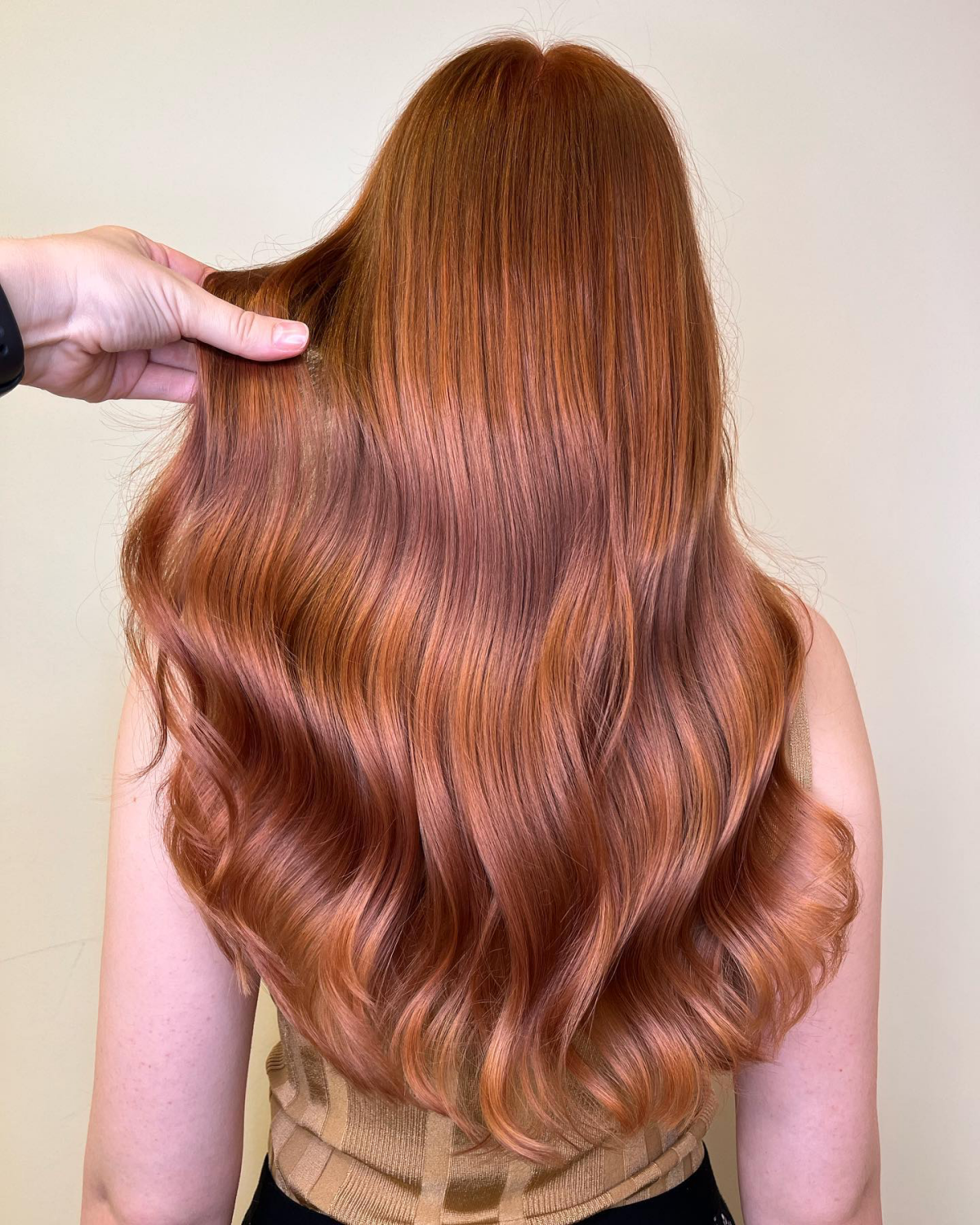
Here’s what we need to talk about, and you have to be 100% honest:
- Your Hair’s Diary: Have you used a box dye, even once, in the last few years? Had a keratin treatment? Played around with henna? Old color molecules stick around and can cause major surprises. I once had a client who forgot to mention a dark brown box dye from a year prior. Her roots lifted beautifully, but her ends wouldn’t budge. We had to pivot our entire plan on the spot.
- Show, Don’t Just Tell: Bring pictures! Lots of them. Show me what you love in different lighting. This helps me see if you’re leaning more coppery-red or more golden-rose. A picture is worth a thousand words, especially in the world of hair color.
- The Lifestyle & Budget Chat: Okay, let’s be real. This is an investment. It’s a high-maintenance color. For the initial transformation, you should expect to budget anywhere from $300 to over $600, depending on your hair’s length, thickness, and history. After that, you’ll need a gloss or toner every 6-8 weeks to keep the tone fresh, which typically runs $80-$150. Be honest with yourself about what you can commit to.
And a non-negotiable step if you have any previous color on your hair: the strand test. I’ll snip a tiny, hidden piece of your hair and test my formula on it. This tells me exactly how your hair will lift and what it will feel like. It’s a ten-minute test that can prevent a total disaster.
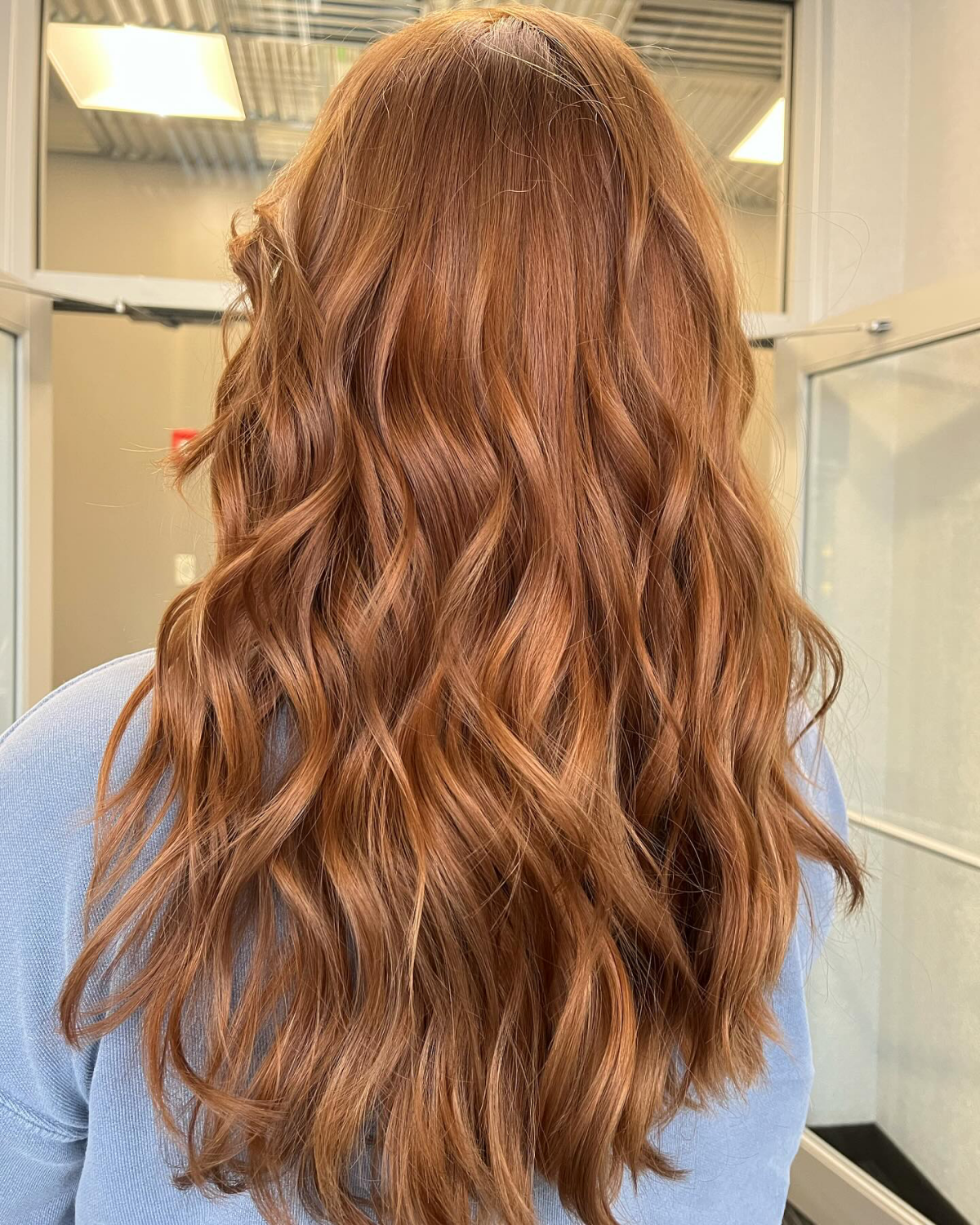
Starting from a Dark Base? Here’s the Reality.
A lot of guides assume you’re starting with lighter hair, but what if you have dark brown or even black hair? Can you still get there? The answer is yes, but it’s a journey, not a one-stop trip.
Let me tell you about two different clients. Client A came in with light brown hair that had never been colored. We achieved her dream dark strawberry blonde in one 4-hour session. It was straightforward. Then there was Client B, who had layers of old dark box dye in her hair. For her, it took us three separate appointments spaced out over six months to safely lighten her hair to the right stage without causing major damage. We had to slowly remove the old color before we could even think about creating the new one.
So if you have dark hair, be prepared for a process. It will take longer and cost more, but doing it slowly is the only way to keep your hair healthy. Your stylist should be upfront about this from the start.
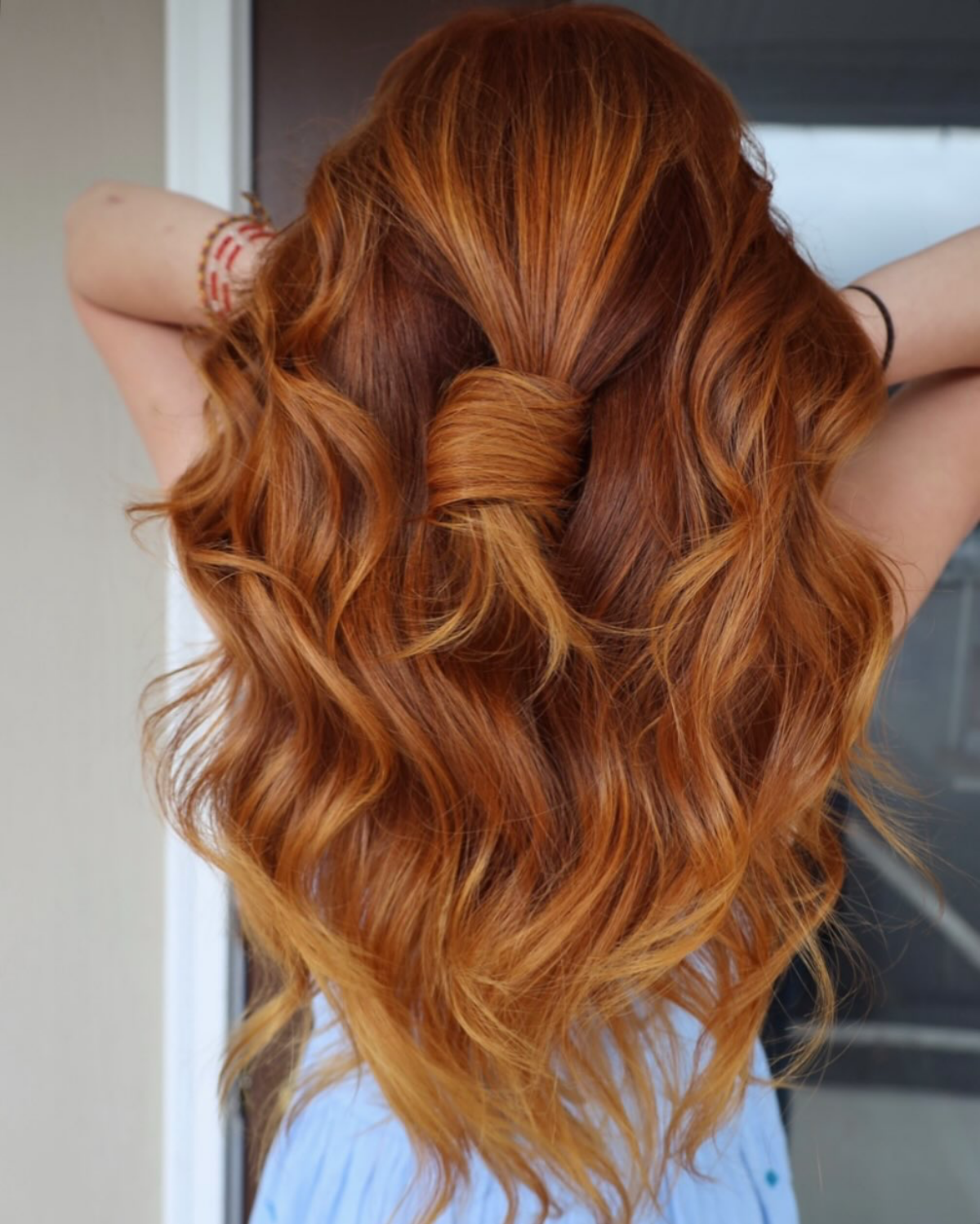
How We Build the Color: The Pro Techniques
Creating a believable, dimensional strawberry blonde is rarely a single-step process. We often layer different techniques.
- Classic Foils: This gives you those defined, ribbon-like highlights. It’s great for adding bright pops of strawberry against a slightly darker base for a high-contrast look.
- Balayage: This is a hand-painting technique that creates a super soft, sun-kissed look. It’s perfect for adding subtle golden pieces, and it grows out beautifully. It’s not my first choice, though, if we need a lot of lifting power.
- Foilayage: My personal favorite for this color. It combines the soft, painted look of balayage with the lifting power you get from incubating the hair in foils. It gives you a bright, beautiful result with a seamless blend. Heads up! Clear your schedule for this one. A detailed foilayage transformation can take anywhere from 3 to 5 hours from start to finish.
After the lightening part is done, we apply toners or glosses. This is where we actually create the shade of strawberry blonde. We might mix a copper, a gold, and even a hint of violet to perfect the tone. It’s a level of customization you simply can’t get from a box.

Keeping Your Color Gorgeous: At-Home Care
Getting the color is just step one. Keeping it looking salon-fresh requires a little homework. The red color molecule is notoriously large and likes to slip out of the hair shaft easily, which is why it fades faster than other colors.
Where you can really make a difference is with your maintenance routine. I always send my clients home with a color-depositing conditioner. These are amazing for refreshing your tone between appointments. A quick tip: look for products like the Moroccanoil Color Depositing Mask in Copper or the Keracolor Clenditioner. Using one of these once a week can seriously extend the life of your color.
Your Maintenance Shopping List:
- Sulfate-Free Shampoo: A must-have to prevent stripping your color. (Expect to spend $15-$30)
- Color-Depositing Conditioner: Your secret weapon against fading. ($25-$45)
- Good Heat Protectant: If you use hot tools, you need this. No exceptions. ($20-$35)
- Hard Water Shower Filter: If you live in an area with hard water, this is a game-changer. Minerals in the water can make your color look dull and brassy. This simple filter can make a huge difference. (You can find them for $30-$80 at hardware stores or online).
Also, turn down the heat in the shower! Hot water opens up the hair’s cuticle and lets color wash right down the drain. Use lukewarm water, and try to wash your hair less often. Dry shampoo is about to become your best friend.
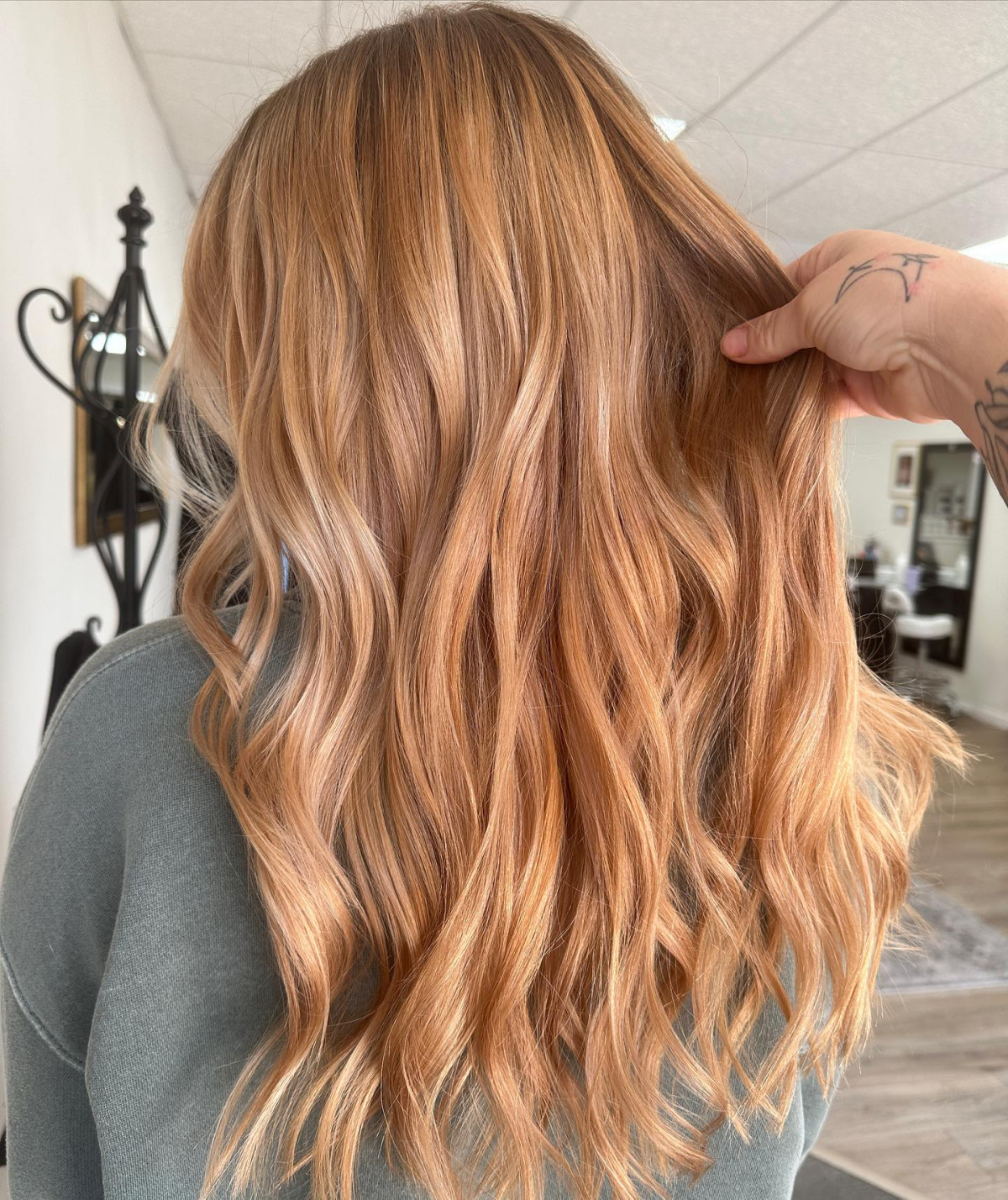
Troubleshooting: When Things Go a Little Off
Even with a pro, sometimes things need a little tweak. Don’t panic!
- It looks too orange! This usually just means the toner wasn’t quite right. A quick glossing service with a formula that has a touch of blue to neutralize the orange will fix it right up.
- It looks more pink than red. This can happen if the formula is applied to hair that was lifted too light. The fix is to add some of that missing gold back into the hair with another toner.
- It faded to a dull yellow. That’s just the red tones leaving the party first. It’s not a mistake; it’s just your hair telling you it’s time for a gloss to bring the vibrancy back.
At the end of the day, dark strawberry blonde is more than a color; it’s a commitment. It’s a partnership between you and your colorist. When you’re ready for the upkeep and you invest in the right care, you’ll have a color that’s incredibly rewarding and absolutely timeless.
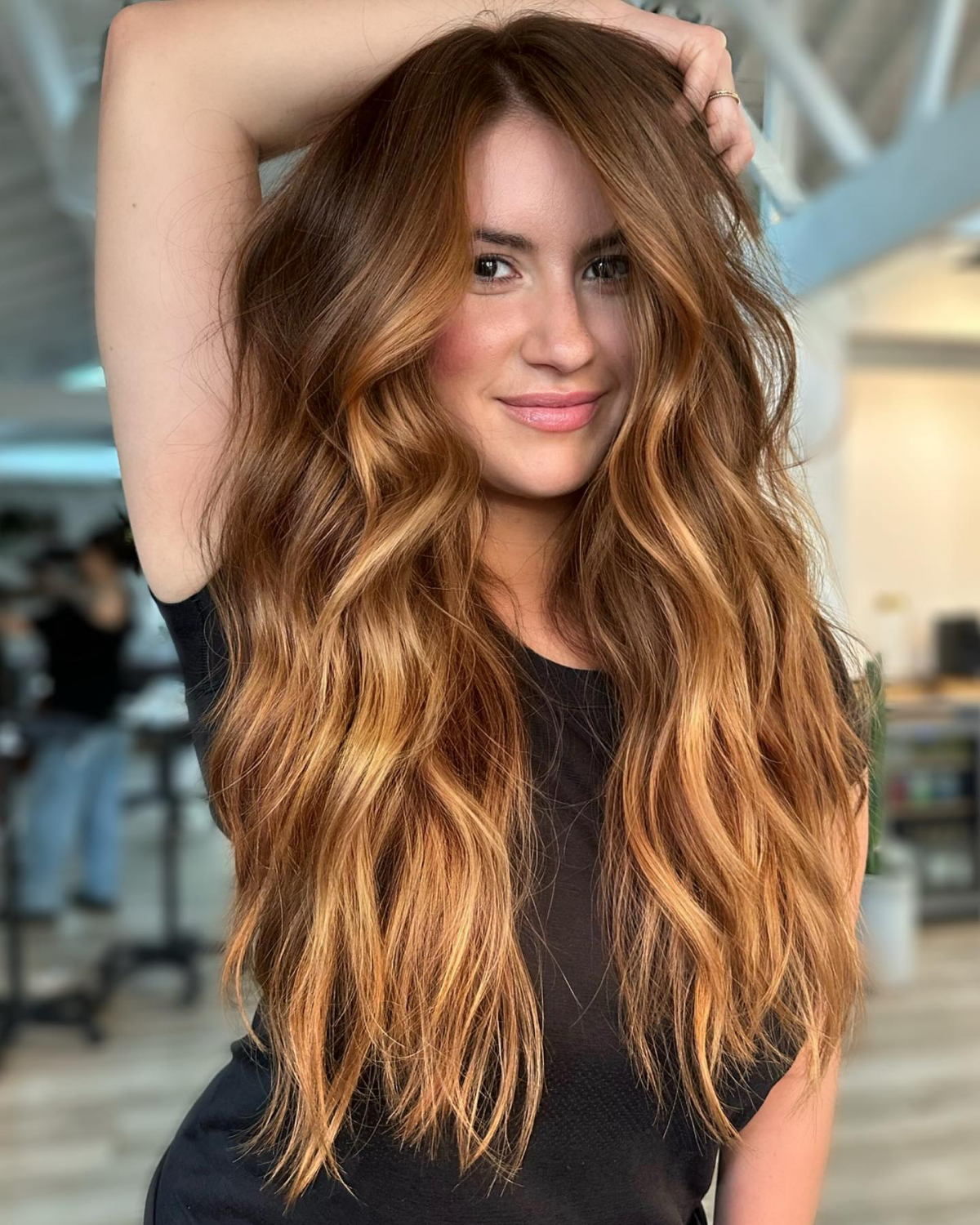
Galerie d’inspiration
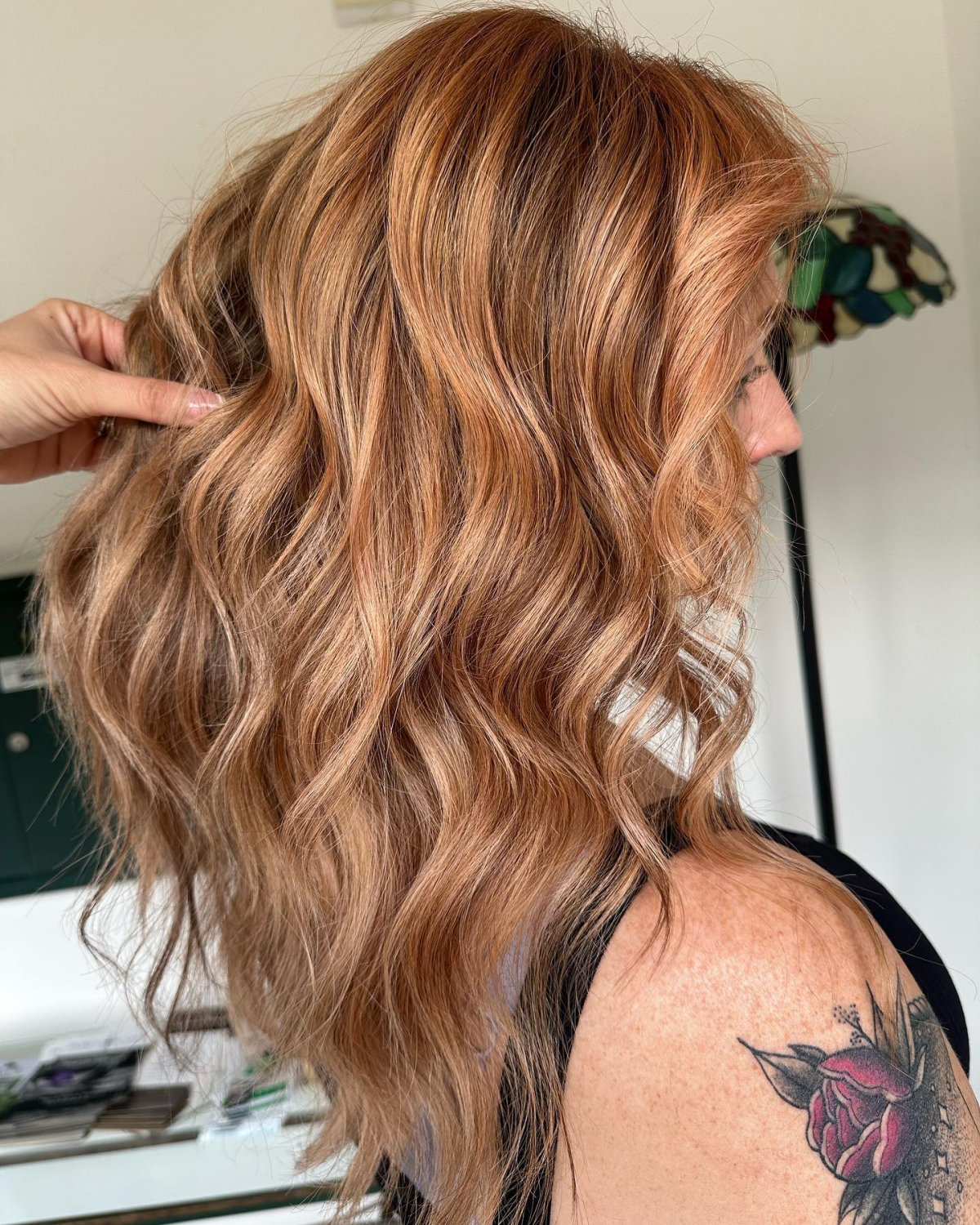
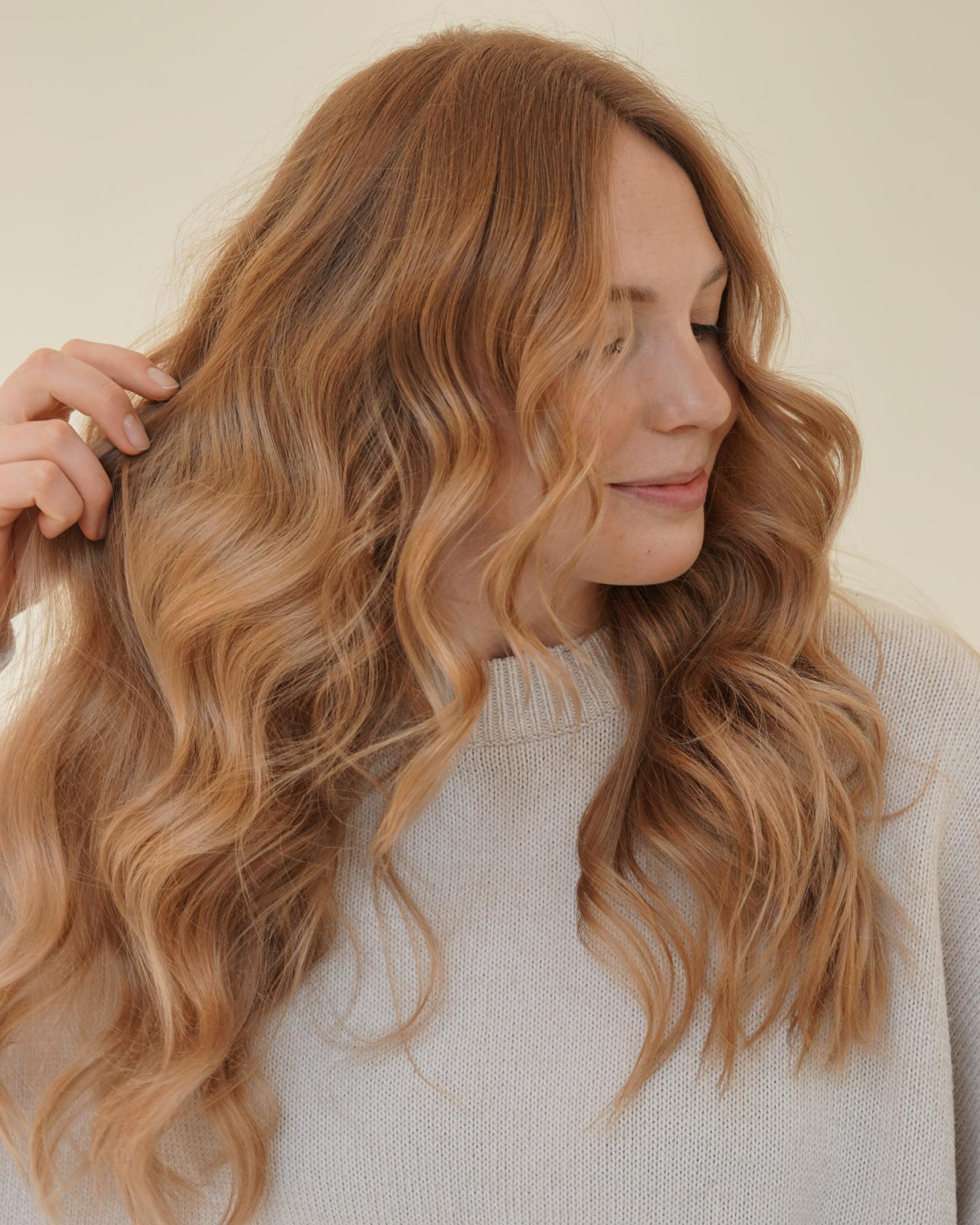
The pigment molecule for red hair is significantly larger than for other colors, which means it doesn’t penetrate the hair shaft as deeply.
What does this mean for your gorgeous new color? It fades faster. That vibrant, rosy copper hue is more prone to washing out than browns or classic blondes. This is why a color-depositing conditioner or a scheduled salon gloss is not just a luxury, but essential maintenance to keep your strawberry blonde from looking washed out after a few weeks.
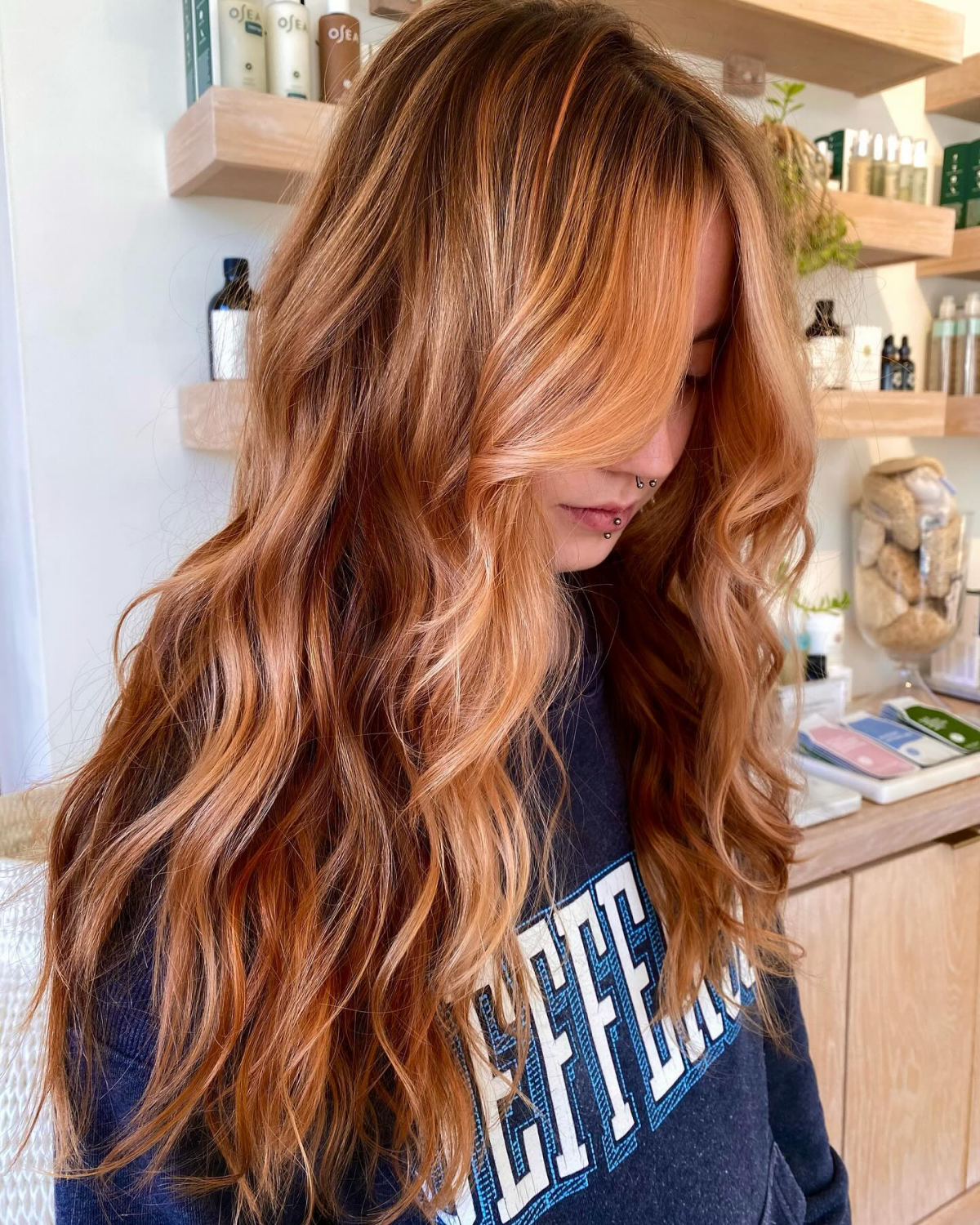
Finding the perfect dark strawberry blonde is all about harmony with your skin tone. Not sure where you fall? Here’s a quick guide to discuss with your colorist.
Cool or Neutral Skin Tones: Lean into shades with more rose gold, beige, or soft cinnamon undertones. Think Amy Adams. These cooler coppers will complement pink or blue undertones in your skin without making you look flushed.
Warm Skin Tones: You can pull off richer, more golden-copper or vibrant apricot hues beautifully. Look to Jessica Chastain for inspiration. These tones will enhance the natural warmth in your complexion, making it look radiant.
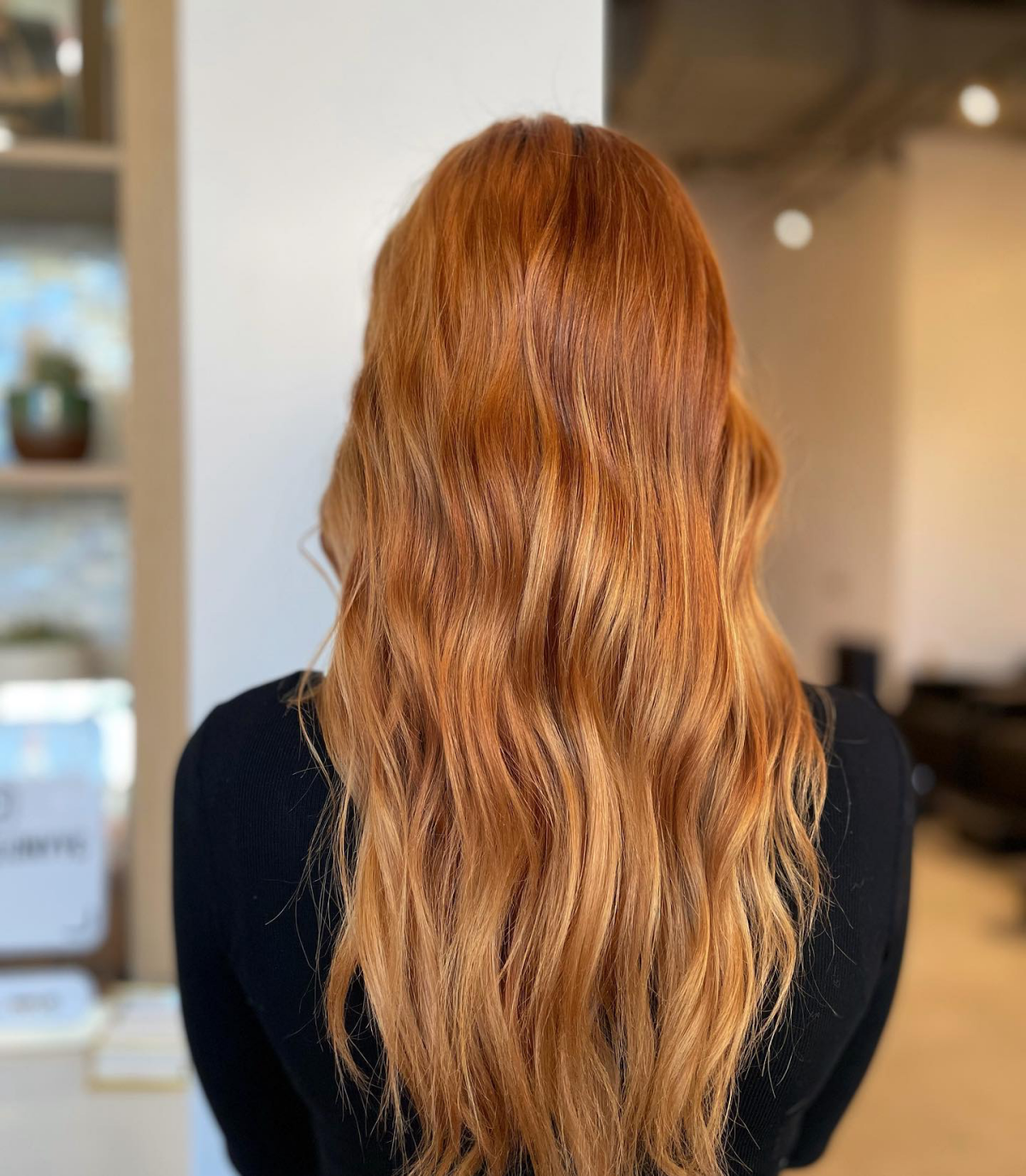
- Your color will instantly appear richer and more vibrant.
- It seals the hair cuticle, creating a mirror-like shine.
- It neutralizes any unwanted brassiness that has crept in.
The secret? A professional gloss treatment. Ask your stylist for a Redken Shades EQ Gloss between color appointments. It’s a 20-minute service that acts like a top coat for your hair, reviving the exact custom tone you left the salon with initially.
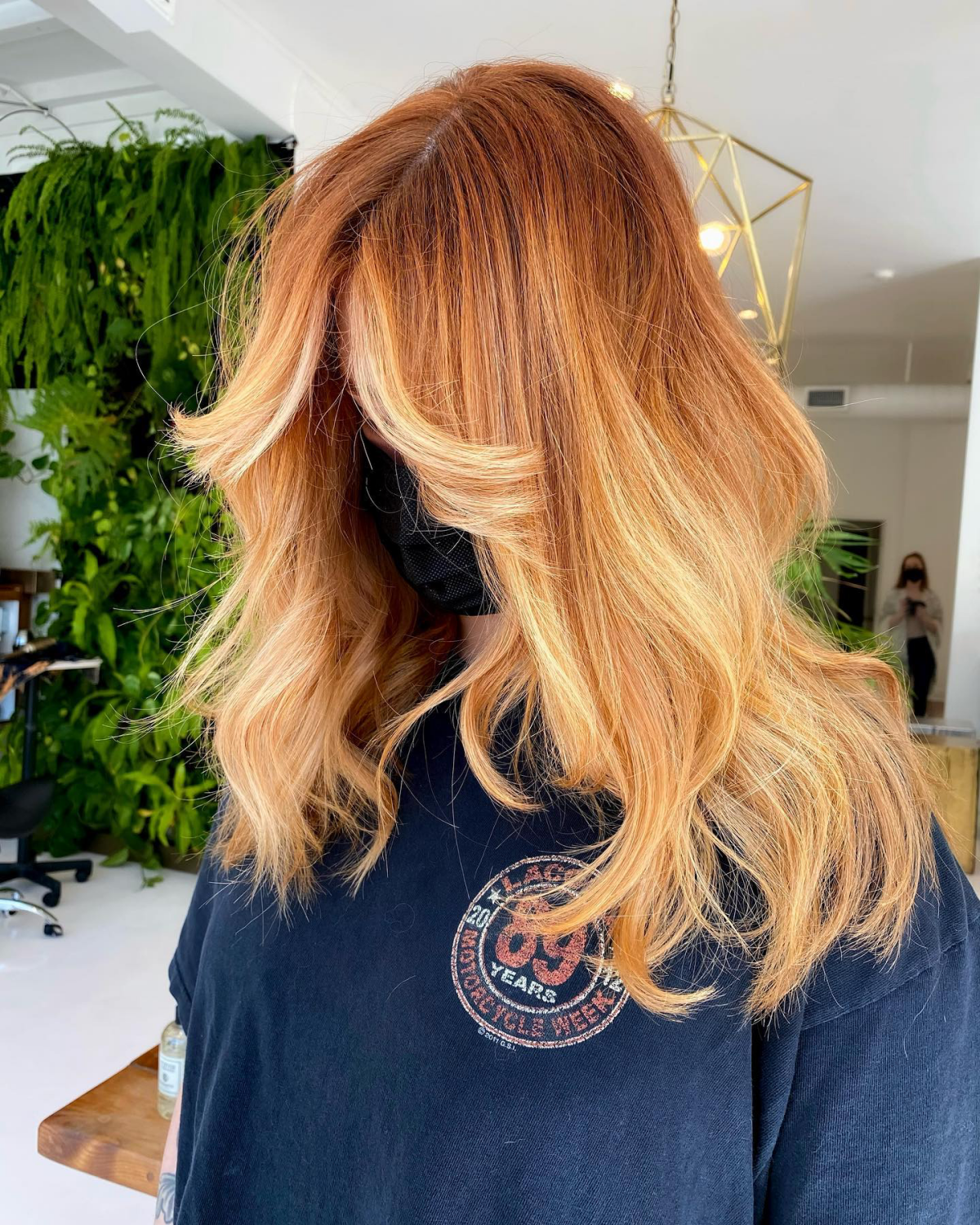
The hidden color killer: Your shower water. Especially if you live in a hard water area, mineral deposits like iron and copper can build up on your hair strands. For a delicate shade like strawberry blonde, this buildup can turn your perfect rosy hue into a dull, brassy mess in no time. A simple showerhead filter can make a world of difference in preserving your color’s integrity.
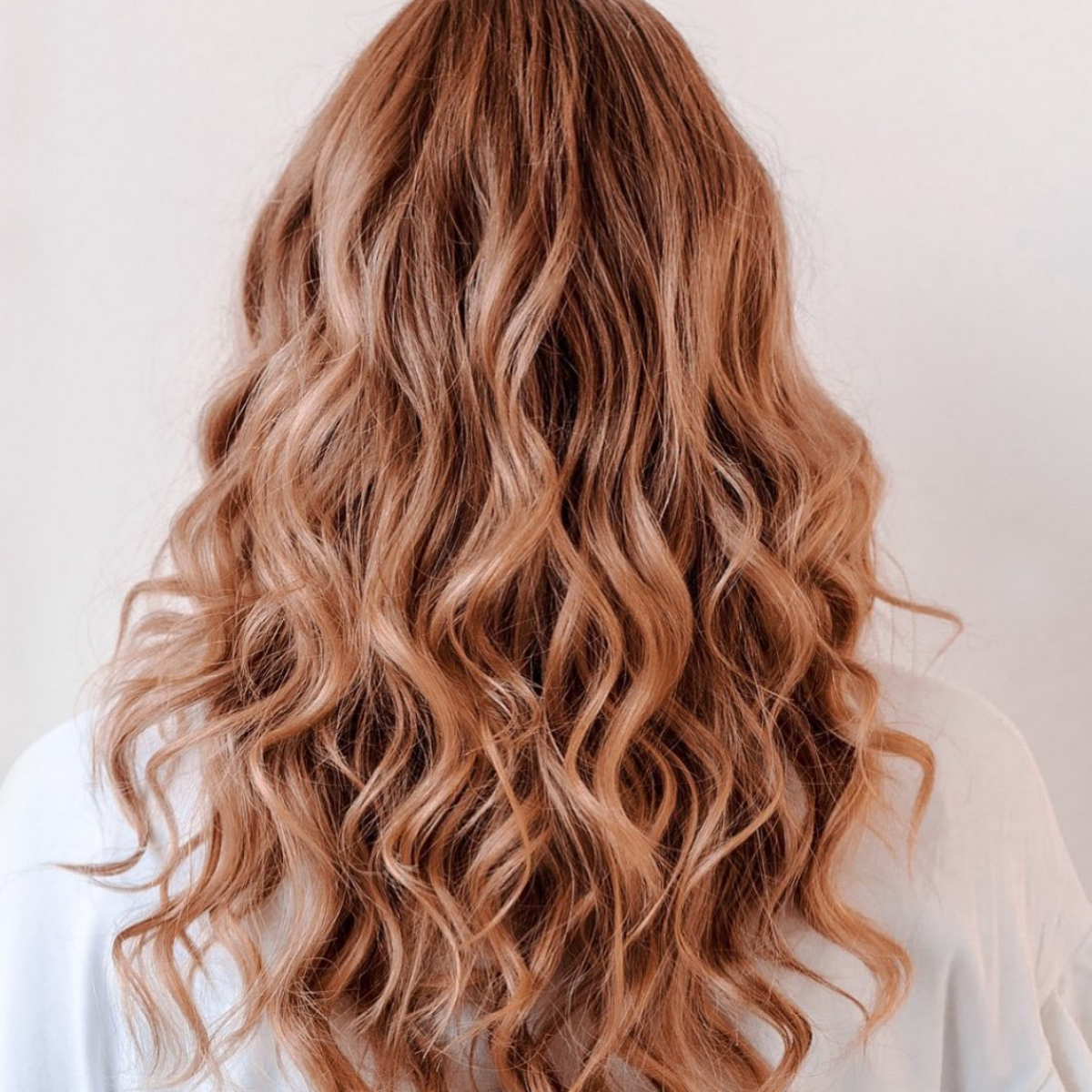
Tempted to refresh your color at home with a gloss?
While at-home glosses from brands like DPHue or Kristin Ess can offer a temporary boost, proceed with caution. The magic of a salon-created strawberry blonde is in the custom-mixed formula of copper, gold, and sometimes even violet tones. A one-size-fits-all tube of copper gloss can easily overwhelm the delicate balance, leaving you with a flat, overly orange shade that’s a far cry from the multi-dimensional color you started with.
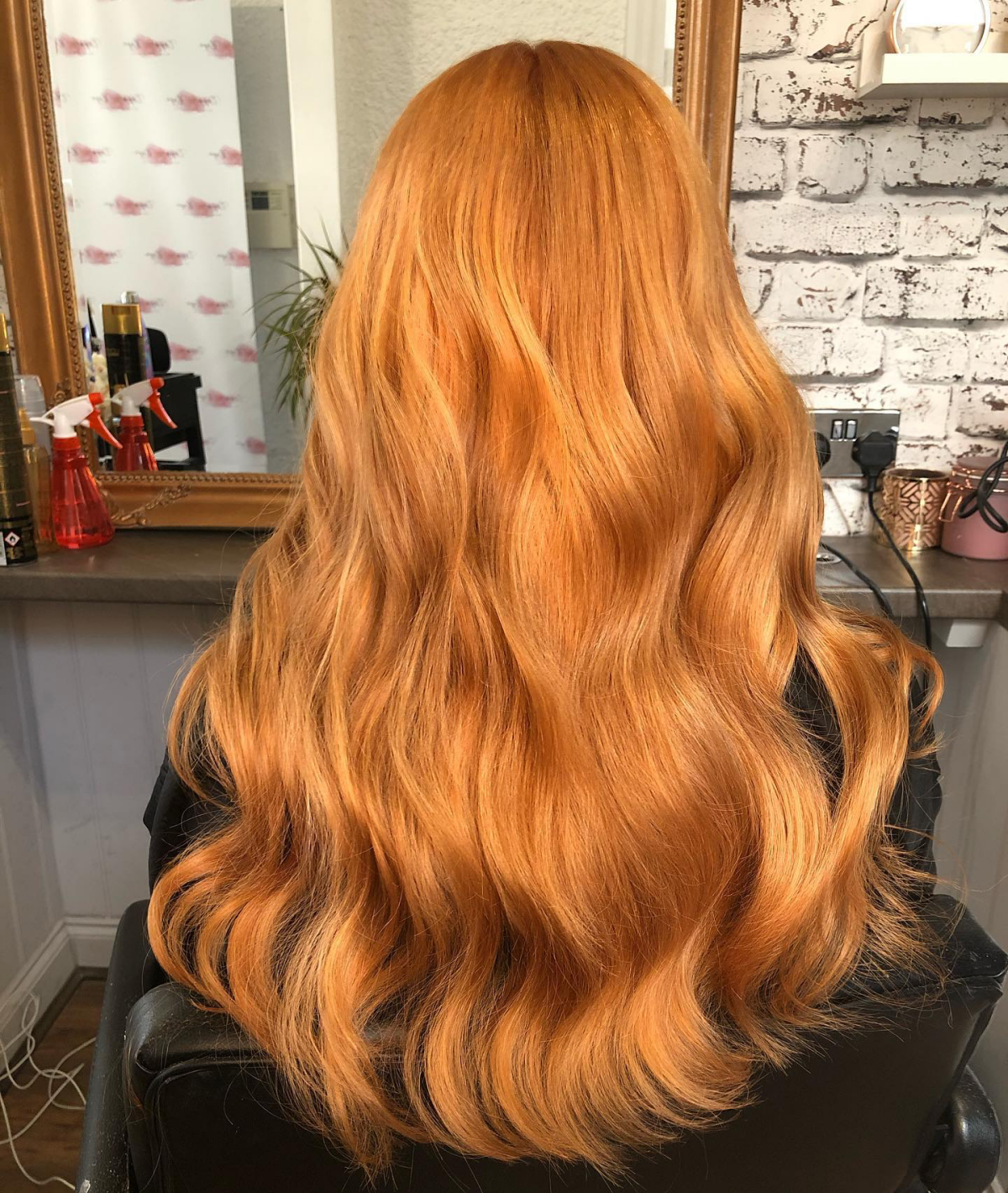
To protect your investment and keep your color looking salon-fresh, your at-home routine is key. Water is color’s number one enemy, so make every wash count. Switch to a sulfate-free shampoo specifically for color-treated hair, like the Kérastase Chroma Absolu line. Once a week, swap your regular conditioner for a color-depositing mask; the Moroccanoil Color Depositing Mask in ‘Copper’ can add back some of the warmth that has faded.
From Julianne Moore’s deep auburn-tinged strawberry to Sydney Sweeney’s sun-kissed peachy version, Hollywood has long been a source of inspiration for this shade. The key is to bring multiple photos of your goal color, shot in different lighting, to your consultation. This helps your stylist see the full spectrum of tones you’re drawn to.










